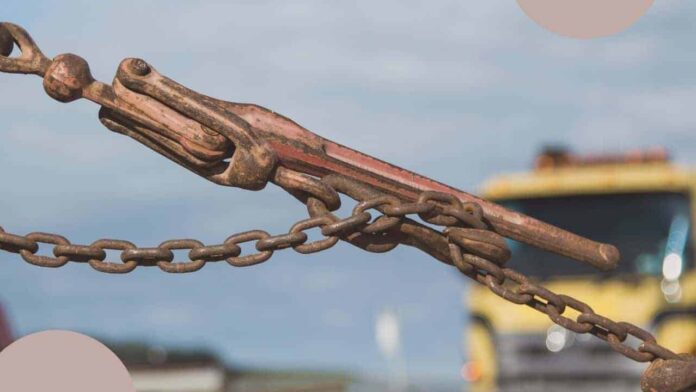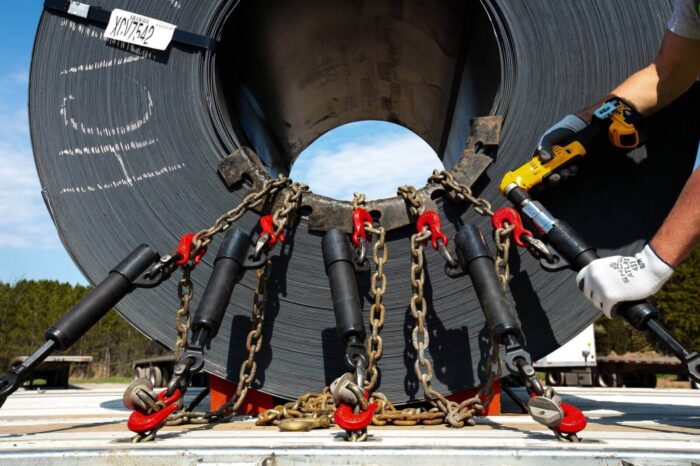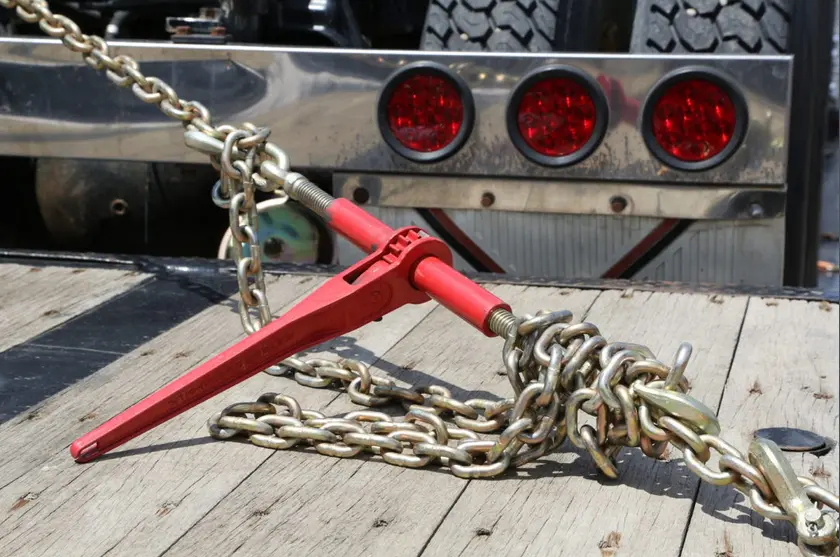
Proper load restraint is important when transporting goods on the road. Whether you’re carrying your surfboard on your car roof or transporting furniture, the right load restraint systems in the right place ensure you and other road users are safe. It also means your loaded goods are in one piece when you arrive at your final destination!
Load binders are essential tools for tightening the chain for securing goods during transportation. However, there are a variety of load binders available on the market and picking the right one is vital. Keep reading to discover if you need a maxi binder, a lever load binder or a ratchet load binder for your loading securement needs.
Maxibinder vs. Lever Load Binder vs. Ratchet Load Binder: What’s the Difference?

Finding the right load binder can be confusing. Identifying the differences between the Maxibinder, lever load binder and ratchet binder will help you decide which style is best for your specific needs.
Maxibinders
The Maxibinder is an all-in-one unique tool that combines the function of the lever and ratchet chain binder. Its ergonomic design includes a comfortable grip, making it quicker and safer to use. They’re available in 6mm, 8mm and 10mm models and should be used with equivalent Grade 70 chains.
The 10mm Maxibinder has a lashing capacity of 6,000kgs compared to the 8mm model which can handle 3,800kgs. The 6mm Maxibinder lashing capacity is 2,300kgs.
Lever Load Binders
Lever load binders are simple tools with hinged levers and tension hooks on either side of the handle. The lever load binder is used to increase the applied force on a tie-down. It’s easy to use, has fewer parts to deal with and allows for quick secure and release of loads.
Lever load binders are available in 6mm and 10mm models and have the same lashing capacities as Maxibinders.
Ratchet Load Binders
Ratchet load binders have two machines with tension hooks on either end, and on the handles which serve as levers. This load binder uses multiple forces when assembling the tie-down. It takes less pulling force with the handle to apply tension, making the ratchet design easier to use than the lever load binder.
Ratchet load binders are available in 6mm, 8mm, 10mm and 13mm models. The first three models share the same lashing capacities of the Maxibinder and lever load binders while the 13mm design can handle 9,000kgs.
How to Pick the Right Load Binder for Anchoring Transport Goods

Each load binder has its pros and cons and while using the right one for its lashing capacity is important, there are other considerations you should factor in as well. Let’s take a look at the advantages and disadvantages of the different types.
Pros and Cons of the Lever Load Binder
Lever load binders are quick and easy to install because of their simple design. They’re less expensive when compared to other load binder types and more compact. However, the operator does need to apply more manual force and the lever could kick back, which is dangerous. Lever load binders aren’t as durable when compared to Maxibinders or ratchet load binders.
Pros and Cons of Ratchet Load Binders
With less manual force needed to operate a ratchet load binder, operators find it easier to use this type of load binder when under pressure to load quickly. They’re safer to use as well, with less likelihood of a kickback from happening. Ratchet load binders have a better mechanical advantage and more adjustment options.
Ratchet load binders are more expensive than lever load binders. They’re not as compact, need more time to assemble and require a bit more expertise to operate.
Pros and Cons of the Maxibinder
The biggest advantage of the Maxibinder is that you get both features of the lever and ratchet load binder. It has a high pre-tensioning force while being safer, easier and quicker to use. It’s a highly versatile tool as it can be used for several loading applications.
Poorly maintained Maxibinders have led to reports of injuries to operators using this tool. This load binder’s chain tensioner is prone to damage caused by wear and tear and if not repaired properly, will become dangerous to use. So, it’s vital to check your equipment regularly.
Transport companies will find that this Australian-made load binder is more expensive when compared to other types of chain binders.

Final Thoughts: Which One Should You Pick?
Operators in the transport industry need to determine which load binder is best for their specific load restraint needs. Factors such as tightening methods, load ratings, cargo sizes and lashing capacities impact the type of load binder used.
Maxibinders, when maintained and used correctly, make excellent load securement tools for keeping your cargo safe during transportation. Lever load binders take a bit more effort to use but they do offer a faster and simpler assembling process. Ratchet load binders require slower force application which in turn, is safer and steadier when securing loads for safe transportation.
Finding the right load binder often comes down to personal preference and knowing the differences will ensure you make the best pick for your load restraint applications.
In conclusion, selecting the appropriate load binder is crucial for safe and effective load restraint during transportation. Understanding the distinctions between Maxibinders, lever load binders, and ratchet load binders is essential for making the right choice.
Maxibinders offer a blend of lever and ratchet functionality, providing versatility and ease of use, albeit at a higher cost. Lever load binders are simpler and more compact, though they require more manual force and pose a risk of kickback. Ratchet load binders offer easier operation and greater safety but demand more time and expertise.
Ultimately, the decision depends on individual preferences and specific load restraint requirements. Choosing the right load binder ensures secure transportation of goods and enhances overall safety on the road.
















